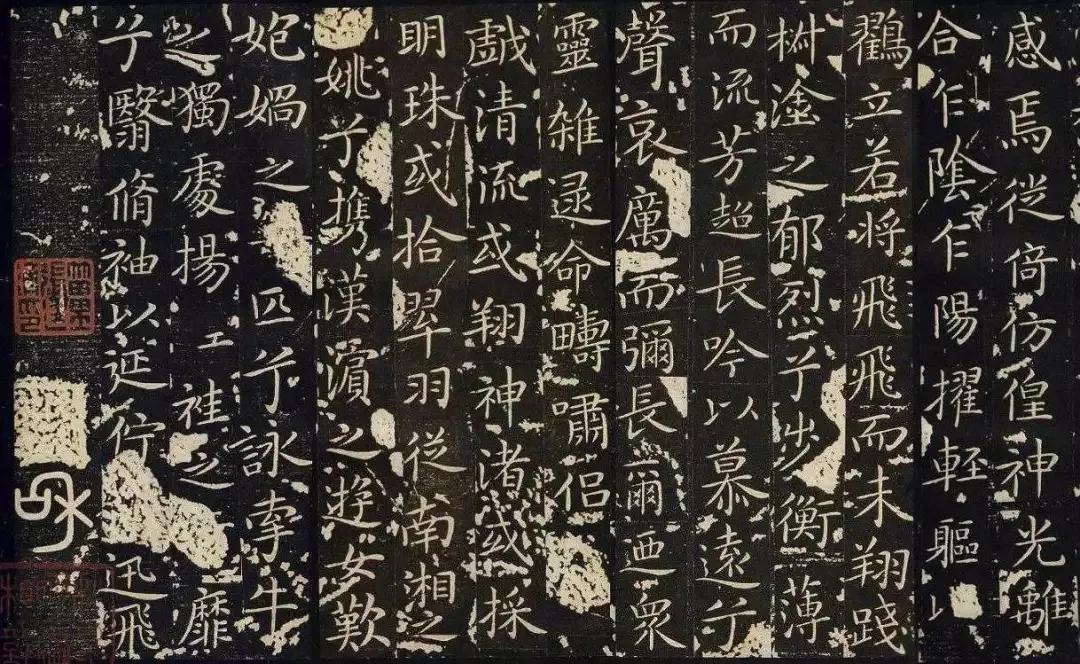
(The picture comes from the network | Wang Xianzhi's "Thirteen Elements of Roselle Endowment")
"Want the spirit of Concubine Mi to be bright, the gods are hidden to dive", Cai Yong let the image of The beautiful and clear goddess of Luoshen surface in the "Shu Xing Fu", which led to the posterity Cao Zhi to do the next famous article "Luoshen Fu" and widely circulated in future generations, once again consolidating the image of Luoshen as a beautiful and moving goddess at the same time and Cao Pi's empress Zhen Mi image to a certain extent. But what you must not know is that from the Warring States Qu Yuan to the middle of the Eastern Han Dynasty, the image of Luoshen was either rejected or expelled because of "rudeness" or because of "absolutely extraordinary, enchanting and elegant capital, beautiful makeup carving".
So where did Roselle come from?
(The picture comes from the network| Yuan Dynasty Zhao Mengfu Xingshu Luoshen)
Takego took the name of "Roselle" for Roselle
It is said that Mi Fei is the god of Luo Shui, "Mi Fei, Fu Xi nu drowned Luo, because Of Luo. (Wang Yi's note "Heavenly Question", "Anthology" Li Shan's note), but whether it can be confirmed that Mi Fei is the god of Luoshui, Cao Zhi is not sure, can only say that "the ancients have words", then the ancients here are Qu Yuan? After all, the word Mi Fei first appeared in the Chu Ci, when the image of Mi Fei appeared in the records as a goddess or elf image of "despite believing in beauty but rude", Qu Yuan used "rudeness" to negate Mi Fei, but did not mention that Mi Fei was the god of Luoshui.
According to literature, The fact that Mi Fei really became a god of folk sacrifice in the Luoshui Basin dates back to the Wu Zetian period. At that time, Wu Zetian was right to claim the name of the emperor, and proved to the world that he was "ordained by heaven" and needed the blessing of "goddess" public opinion to stabilize his throne. "According to the Old Book of Tang, in the fourth year of Tang Dynasty (688), Wu Chengsi forged a piece of 'Rui Stone' that was said to have been obtained from Luoshui, and inscribed on the stone 'Our Lady of The Prophet, Yongchang Emperor'. Later, he presented the Ruishi stone to Wu Hou, who named the stone 'Baotu', added the honorific title of 'Our Lady Of God Emperor', and named Luo Shen mi concubine 'Xiansheng Hou'. The Zizhi Tongjian also states that Wuhou Fengluoshui was 'Yongchang Luoshui, fishing is prohibited, and sacrifices are better than four blasphemy.' Then Tiantian called the empress dowager "Empress of Heaven" and built a temple for her to be worshipped by future generations. In the first year of Yongchang, the Heavenly Empress enjoyed the worship of Luoshen, and there were 14 songs of "Wuhou Daxiang Bailuo Movement". After this, there is the current Roselle theory.
(The picture comes from the network | Gu Kaizhi's "Roselle Endowment")
A brief introduction to Roselle
Luoshen, also known as Mi Fei, the earliest extant written record comes from the "Chu Ci", and in the Middle Ages, the image of Mi Fei was more visualized by a poem "Luoshen Endowment" written by Cao Zhi, and the legendary Luoshen was combined with the real Zhen Concubine to form a new image of Luoshen, and posterity also accepted this "Luoshen" setting. During this period, Roselle gradually evolved into a secular beauty, becoming the embodiment of the ideal goddess and the object of emotional sustenance in the writings of the literati inkers, such as Gu Kaizhi's "Roselle Endowment" and Wang Xianzhi's "Roselle Endowment". Wait, let the word "Roselle" appear to represent beauty. "Roselle" will frequently appear in poetry, novels, operas, etc. in different periods, and the image of "Roselle" will also change with the aesthetic concepts and social trends formed by people in different periods, thus enriching the development of the word "Roselle". References:
1. "The Cultural Connotations of the Image of Goddesses" by Wang Lizhou
2. "On the Evolution of the Image of Concubine Mi in the History of Ancient Literature: On the Trend of Chinese Literary Development Reflected by It" by Wu Guanwen
Editor: Liu Jingyi, Grade 19 Communication, School of Fashion Communication, Beijing Institute of Fashion
Instructor: Zhao Chunhua